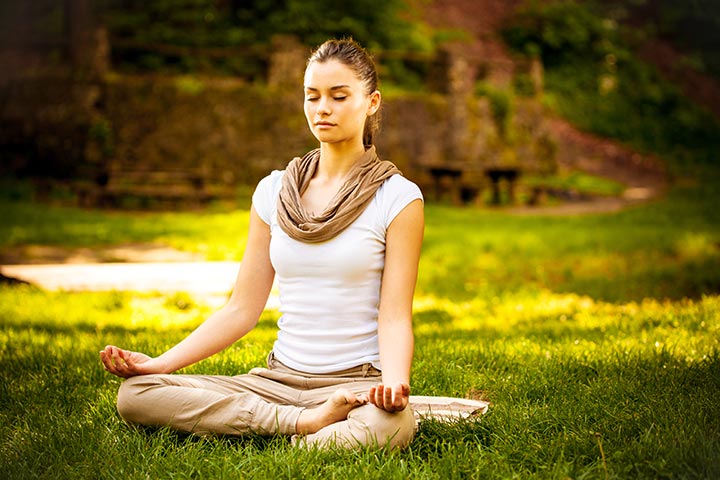What is stress?
Recently, with the current acceleration of the pace of life, stressful conditions are beginning to influence our lives more and more. And the forecasts for the future are quite pessimistic. And this is due primarily to the fact that we operate with a large amount of information; click to read more. In connection with the “technological breakthrough” that humanity has made, the pace of our life has greatly increased in recent times.
Stress is a physical, chemical or emotional factor that causes physical or mental distress. When it is impossible to get rid of stress, managing stress is an achievable and realistic way out and can be achieved in several ways.
For the first time, the term “stress” in physiology and psychology was introduced by Walter Cannon in his works on the universal reaction of people “fight or run.” But initially, this word meant “nervous-mental” tension (the “fight or run” syndrome). Therefore, when in 1936 the famous Canadian stress researcher and physiologist Hans Selye published his first work on the general adaptation syndrome, he avoided the use of the term “stress” for a long time. And only in 1946, the famous physiologist began to systematically use the term “stress” to determine the general adaptive stress. Today, this term has become firmly established in our everyday life.
How does stress affect our lives?
In moderate amounts and not often stresses are even useful. They stimulate the activity of the organs and systems of our body, increase efficiency, mobilize all the strengths of the body, helping them to gather, for example, before passing a difficult exam or before a responsible speech at a work meeting. This stress is called as eustress.
But most often, it is quite the opposite. Life is the continuous stress and has the opposite effect on the human body. The organism being in a state of constant stress quickly squanders its resources. The person becomes distracted, irritable, the reserve of forces quickly expires. This negative state is called as distress. Here, provoking factors can be the death of a loved one, a serious illness, a trauma. Stress of this kind is manifested in the imbalance between the processes of excitation and inhibition in the cerebral cortex and leads to increased excitability or depression, accompanied by insomnia, fatigue, neuroses, irritability, and then the development of diseases, especially the cardiovascular system (angina and myocardial infarction, hypertensive disease and stroke), as well as diabetes, psoriasis, a sharp decrease in immunity, resistance to external stimuli. That means that distress has a disorganizing effect on the activities and behavior of a person, knocking out his or her equilibrium for a long time.
Therefore, it is very important not to lose the moment and not to allow the stress to pass into the form of chronic depression, which is already becoming a medical diagnosis and requires serious therapy, up to hospitalization and treatment under the constant supervision of doctors.
Causes of stress
The causes of stress are great, however, for each of them, the emotional outburst and the shock is characteristic. There are two groups of factors that cause stress:
The personal factor:
- death or illness of a close family member;
- divorce or wedding;
- change in the type of activity;
- loss of all savings;
- dismissal.
Organizational factor:
- working conditions that do not meet the requirements;
- time limit for the performance of a specific task or job;
- Introduction of innovations;
- high demands to you;
- Absolutely uninteresting and very boring work;
- an increase in the scope of work.
Stress Management Techniques

To date, it has been proven that 80% and some scientists say that even all 90% of diseases have a somatic character, which means everything begins with emotions and changes in the rhythm of breathing. Therefore, stresses, to improve the quality of our lives, can and should be controlled.
Self-regulation is the management of one’s psychoemotional state, which is achieved through the influence of a person on oneself with the help of the power of words, mental images, control of muscle tone and breathing. The main feature of self-regulation of states is their focus on the formation of adequate internal means, allowing a person to carry out special activities to change their state. In our everyday life we often intuitively use the sets of such devices developed in an individual experience that allow us to cope with excitement, quickly enter the working rhythm, relax and relax as much as possible. This experience is reflected in virtually every age-old culture of different peoples, inside of which whole systems of receptions and means of self-regulation of states with distinctly expressed educational and educational character were created. “Learn to control yourself” is the main motto of such measures, often encountered in various philosophical, religious teachings, pedagogical systems, etc.
Timely self-regulation is a type of psycho-hygienic means. It prevents accumulation of residual overvoltage phenomena, contributes to the fullness of recovery, normalizes the emotional background of activity and helps to take control over emotions, and also enhances the mobilization of body resources.
There are a large number of techniques for managing stress and ways of self-regulation of the mental state, among which are:
- Relaxation methods (viewing flowers in the room, photos, other pleasant or expensive things for the person, thinking about the good, pleasant, watching the scenery, sun baths, breathing in fresh air, laughing, smiling, humor)
Physical exercises (yoga, walking, running, swimming, various movements such as stretching, relaxing muscles;)
- Maintaining a healthy lifestyle (proper nutrition, rejection of bad habits, physically active life, prevention of diseases, favorable social circle).
- Ability to manage time
- Consultations or group therapies (art therapy, music therapy, color therapy).
But such means cannot be used, for example, at work, directly at the moment when there was a tense situation or fatigue accumulated. Here, breathing gymnastics comes to the rescue.
Control of breathing is an effective means of influencing the tone of the muscles and the emotional centers of the brain.
Breath from time immemorial in many peoples is one of the effective means of normalizing a person’s mental state. The rhythm of breathing, as well as the rhythm of the heart, is a reliable and reliable indicator of a person’s mental state. Breathing not only enriches the blood with oxygen but also affects the nervous regulation of all vital organs. With the help of breathing exercises you can learn to control your body, in particular, you can provide yourself with first aid in any acute pathology.
Take, for example, an attack of bronchial asthma. The person does not have enough air, he/she suffocates, panics. In this case, the technique of correct breathing will have to come in handy. (See also: 10 Natural Stress-Relief Hacks You Have to Try)
There are several methods of such control, depending on the ultimate goal of regulation.
- Belly breathing
Slow and deep breathing (involving the muscles of the stomach) lowers the excitability of the nerve centers, promotes muscle relaxation. Frequent (chest) breathing, on the contrary, provides a high level of activity of the body, supports neuropsychic tension. Concentration on the breath increases the amount of energy in the body, activates the work of the brain, while the concentration at the output enhances the relaxation of all muscles, soothes thoughts and emotions. Starting position – standing put one palm on the chest, and the second – on the stomach. Take a deep breath. With proper full breathing, the first movement should begin with the lower arm, that is, the one that is on the stomach.
- Breath counting
The simplest breathing exercise for relaxation is counting. Sit on a chair preferably with a straight back. Relax your arms, legs, neck. Breathe deeply. Begin to count breaths and exhalations. Going to 10 and start again. This exercise will easily bring you back to the “here and now” state, allowing you to clearly and soberly assess the situation.
- Concentration on inspiration
It is necessary to concentrate on breathing: slowly take a deep breath, at the peak of inspiration, hold your breath for a moment, and then exhale as slowly as possible. It is necessary to imagine that with each breath, you are filled with energy, freshness, and lightness, and with every exhalation, get rid of troubles and stress. In this case, breathing is carried out due to movement of the lower third of the lungs by movement of the abdominal wall, the thorax and shoulders remain immobile.
- Gymnastics in the rhythm of the heart
Many specialists advise this technique. It is performed under the rhythm of the heart. First, you need to find a pulse, close your eyes and feel your breath and heartbeat. When a person gets used to the rhythm, he needs to calculate the number of strokes that come from inhaling and exhaling. You need to exhale at the first, second and third heartbeats. It is necessary to find a rhythm convenient for yourself because the strain of the organism depends on this. A person may notice that his or her heart began to beat more often – it depends on the frequency of breathing. A prolonged exhalation will slow the heart rate a little and make it more comfortable for a person to hold gymnastics. In the period of the tension of the nervous system, the synchronization of the respiratory and cardiac cycles becomes smaller, so physiological processes work. Therefore, when a person adjusts the rhythm of the heart and breathing, he facilitates the action of the nervous system, helping to relieve tension and returning the body to a state of calm.
- Exercise “Breathing of left and right nostrils.”
In yoga, this breath is called Suryabheda (Surya-Bheda-Kumbhaka) pranayama. Surya means “the sun,” and Bheda – “piercing.” Breathing occurs first through the left, and then through the right nostril. At the same time, the right nostril is closed with the thumb of the right hand, and the left one with the little finger of the right hand. Breathing should be slow and deep. In the first case, the work of the right hemisphere of the brain is activated, which promotes relaxation and tranquility. Breathing through the right nostril activates the work of the left hemisphere of the brain, activating the cognitive (rational) potential.
Regular training in the use of such breathing calms the nervous system, cleans sinuses and leads to an optimal state of blood pressure in people suffering from low blood pressure. In addition, the practice of this pranayama leads to an increase in heat production in the body and activation of digestion processes.
Therefore, faced with stress, you should not give up. This can only aggravate the current situation. A human being is the only creature on Earth who can intentionally change his or her breath.
And if this is so, then we have a universal mechanism for healing – breathing. It remains only to learn how to use this mechanism.
About The Author:
Carol James is an academic writer. If you want to see her works, you can visit Essaylab. It is a great service that provides write proficient school essay help for people of all school star. The main objective is to simpleness your high school studies and gives everyone a possibility of flourishing without having excess strain.


![3 Breathing Techniques Which Relieve Anxiety [And The Science Behind Them] Breathing Techniques Which Relieve Anxiety](https://www.safeandhealthylife.com/wp-content/uploads/2021/09/Breathing-Techniques-Which-Relieve-Anxiety-150x150.jpg)


